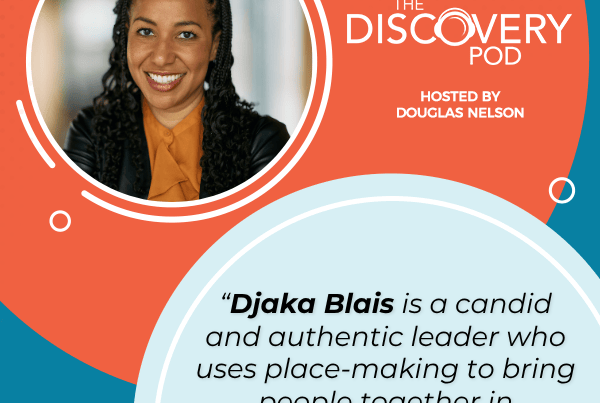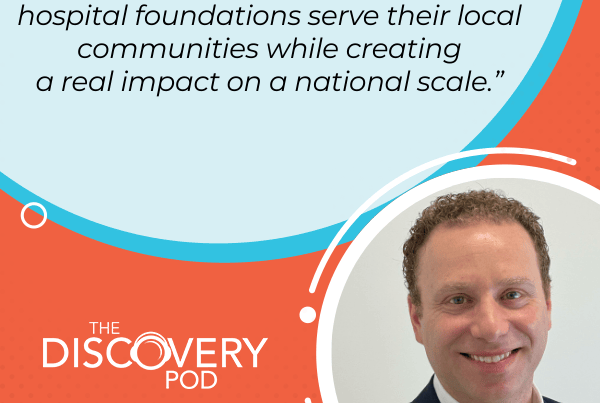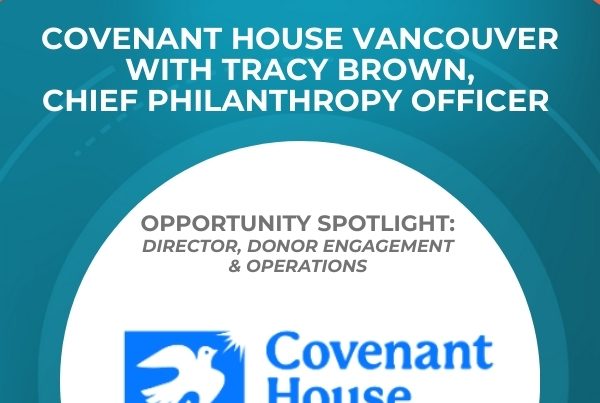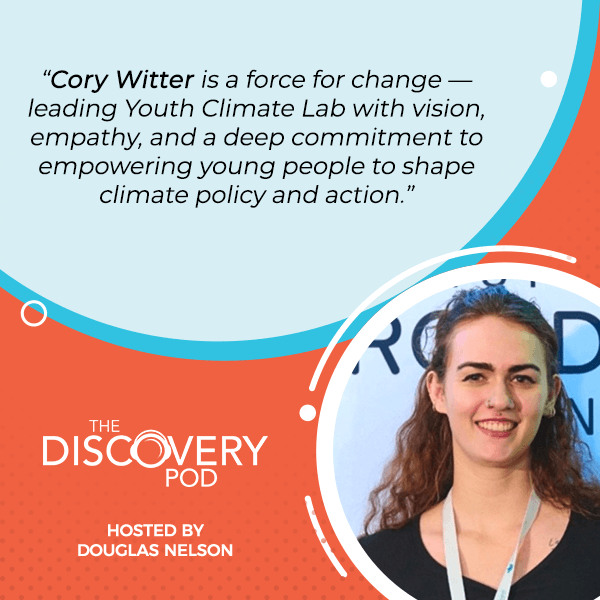
What happens when you center youth voices in the climate movement? In this episode, Cory Witter, Executive Director of Youth Climate Lab, shares how the organization empowers young leaders to drive systemic change. Cory breaks down the principles of radical collaboration — from fostering creativity to intentionally disrupting the status quo — and explains how Youth Climate Lab partners with over 100 organizations to create space for youth to influence policy and lead innovative projects. They also discuss the importance of radical rest to prevent burnout and sustain long-term impact in such emotionally charged work. Whether you’re in advocacy or just passionate about change, this conversation is a powerful reminder of how youth energy, paired with thoughtful strategy, can transform the future.
—
Listen to the podcast here
Youth Climate Lab With Cory Witter, Executive Director
My guest is Cory Witter. Cory is the Executive Director of Youth Climate Lab. If in your organization or around your board table you’ve ever heard someone say, “How are we doing it? How are we engaging the young people?” If you don’t have a good answer, you are going to want to read this episode. As Executive Director of Youth Climate Lab, Cory creates the organization strategy, ensures equity is integrated in practice in all facets of YCL’s work and builds relationships to expand the impact of the organization’s work.
Our conversation talks about how advocacy and action can be paired together to create a powerful movement for change and how that movement for change can inspire generations of young people to step forward and take action. If you are looking to add energy to your purpose, energy to your cause, you are going to want to read this great episode with Cory Witter.
—
Welcome to the show, Cory.
Thanks so much for having me.
It’s going to be a great conversation. You’ve got a great message to tell and a lot to teach the social profit sector more broadly about what you and your colleagues at Youth Climate Lab are up to, but let’s start there. Tell us a little bit about Youth Climate Lab, how you are organized and who you serve.
Youth Climate Lab: Leading Climate Action Through Radical Collaboration
Youth Climate Lab is a Canadian-based international NGO and it’s youth-led and youth serving. All of our staff are youth under 45, and we serve youth populations within the climate movement. We have been around for several years. We started in 2017. It started as a need for having more youth-led spaces within the climate movement and noticing that there was a bit of a lack of resources, opportunities, and programs that were specifically catered to youth by youth. Since then, we have grown and we are now countrywide working in 100 plus countries at this point through various partnerships and focusing on getting youth engaged and active in the climate space and seen as leaders in the climate space is where we are going in now.
Included and leading. That’s an important piece of that. One of the things I’m interested in jumping into and having you share with our readers is the principles of radical collaboration that you have within your organization. Can you tell me what those are, how you use them and how they were developed?
Radical collaboration is something that we use in every aspect of what we do. We use it in our lecture strategic plans for the organizations when we are thinking about partnerships and programs. It’s how Youth Climate Lab accomplishes what our mission and vision is. If the principles are youth first, so making sure youth are at the forefront and leading as we have already said, creative. Making sure to emphasize that creativity is such a powerful process in the climate movement, in conveying messages and how it’s needed to have creative problem solving for such complex issues.
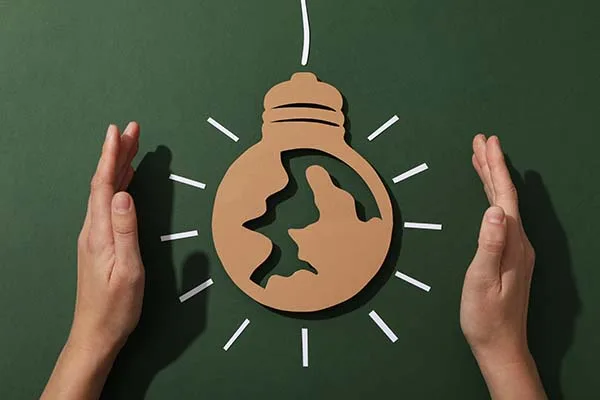
Youth Climate Lab: Creativity is such a powerful process in the climate movement, conveying messages and highlighting the need for creative problem-solving for such complex issues.
One of the big ones is disruptive. We are always thinking when we do our partnerships and our programs, how is it going to create change? How is it going to change the status quo? What systems are we looking to influence and how can disrupt it because what’s working isn’t working. The last three is catalytic, so how we can address gaps in youth participation and inclusivity. We look at that a lot specifically and how we are engaging youth, which youth aren’t being engaged and what that can look like, then equitable. Recognizing that climate change has disproportionate impacts on different communities. How can we help level the playing field in that?
What I about that is it is so clear about how the organization approaches the work you do and you lay it right out there. Can you give us an example of how you use those principles when you are considering a new strategy or a new path forward?
We use it a lot when we are looking at who we want to partner with. The principle in and of itself lends to having partnerships and recognizing that unusual actors. Maybe not the most obvious partners is the way you can have that collective voice and make that change. We see which partners are working to be disruptive or which partners are working in interesting ways.
We have partnered with over 100 as well in our years. Lots of finding innovative ideas, and trying to scale ideas, especially at the beginning of the organization. It was testing and scaling new ideas in different areas. We have moved a bit more into what is radical and at our place in organization our programming is helping support youth who are testing and scaling those ideas. Creating space for having that disruptive and creative mindsets and giving the resources for youth in that. That’s how we build it into our programming and that directional shifts we have made over the last several years.
It’s not surprising to see it there and it fits very well in your organization. The phrase disruptive is one that we hear across the social profit sector. There are as many organizations being disrupted and using it in a negative way. You are using it in a positive way. How do you define disruptive?
Defining Disruption And Measuring Progress In Climate Advocacy
For us, disruptive is going against what the status quo is. What is the understanding? What requires this huge collective action? How can we create more resilience? Where are these pushing points or these hinge points of where these issues are arising again and again? Something we are looking at in the disruptive lens in terms of programming, we have been doing different chats and youth that have been in our programs and staff that we have and board members.
Disruptive is going against what the status quo is. Share on XI would say a couple years ago, there was a big impact of all the climate protests and everything that and that’s died down. Maybe that momentum isn’t quite as strong as it was in 2019. Where are youth looking to have the most disruptive influence? There’s such a bigger desire on the more federal level. There’s such a huge political interest and those youth want to have that voice, change, influence, and authority at federal political policies and how that looks in climate.
We are thinking how can we work in systems change and create programming that’s going to get youth involved at that level and disrupt that system to have more of that youth emphasis it doesn’t have. We are work talking with government, our partners, and seeing where we can put people into that and change the understanding of what youth, political, and climate policy sphere can look like.
I’m curious how you measure or think about measures of success or making progress when the goal and as system change and very appropriately in most ways. What does progress work? How do you know that it’s been a good day or it’s been a good month at Youth Climate Lab?
The systems change specifically. It can get quite interesting because it’s not necessarily day to day or month to month. You are looking at those longer timescales of how people’s mindsets look. We do a lot of things looking at what the reaction is to our programs, how you are feeling, where they are going after our programs and what connections we can make.
Our success is the youth we are working with or youth in general feeling more empowered and more in control and feeling they are receiving the support they need. I find Youth Climate Lab itself, from how I view it, is the support to the youth to get what needs to get done. We try to build stuff around that. If we can have successful programming, have it funded, have youth at the forefront or have them be heard, have them in the media, or have them starting their own things. Some of our programs have worked on micro projects and Microgranting. We have seen youth go on to build out from that and start their own organizations and see how support can look from that. That would be a successful moment.
In your role, how do you measure success? How do you know that you’ve done a good job? I will give you a whole year instead of a day or a month.
As the executive director, I look at our organizational health and the impact of our program. We tend to be both. My background is in operations finance. I love a good budget. if we have a great budget that’s a success of what it looks like.
There’s a lot of other organizations that could use you that I have encountered.
The math part is always my favorite part but I think as well as I look at a lot of things what is our organizational culture, what are the messages we are putting out, how are we showing that as Youth Climate Lab, and how we are offering those supports. I’m focused on, are employees feel good about the work we are doing? Are the program’s staff being like, “This is successful to me?” Are the youth that we are engaging with having positive responses? Are we getting new initiatives out there? Are we growing our initiatives? Where are we expanding our reach, support, and influence?
That can look a lot of different ways. We are starting two new programs that we have been trying for the last years to get off the ground and building up partnerships and fundraising for them. That’s a success to me as these initiatives are finally starting ones. Our staff have been super excited to start. That’s also feeling good amongst the team as well. It’s a mix of all the things but I’m personally focused. I see myself as very support to the staff and getting them to feel good. That goes into the youth that we work with.
You’ve put your finger on something that is a real challenge for a lot of organizations, particularly movement organizations or movement-based organizations, which is you need that infrastructure and those backbones in place to support the great work. It’s not enough in the medium term or the long term to be passionate about something you’ve got to organize yourself.
It’s not surprising that as executive director you’ve got that operations background. They need you to do that. How do you balance that need for some order and structure with the very passionate oftentimes emotional responsive people who are joining you either as staff or the youth you are supporting? Capturing that commitment that they have that may be at least initially resistant to organizational structure.
Balancing Passion With Organizational Structure For Long-Term Impact
That’s something that’s come up and it’s a big balancing act. I would say especially working so extensively with youth, especially youth that are maybe in university or gotten out. I don’t want to sound a jaded old person at 28, but there’s always these idealistic views, changing the world, and all of this passion and energy which is so amazing to see. Sometimes it’s not always what can be done at the drop of a hat in this organizational stuff that we need to work through and we need to have our checks and balances and make sure we are doing stuff in the proper way.

Youth Climate Lab: Sometimes, it’s not always what can be done at the drop of a hat. We need to have our checks and balances and make sure we are doing things in the proper way.
That can cause a bit of tension or realignment of understanding. A big part of that is having that transparency with folks. A lot of stuff has come up when they do not understand the reasoning behind it. We work remotely but have an open Zoom link policy of being able to go through and backing up the reasoning behind why we are doing certain things and saying, “This is what you want to do.” It’s passion, amazing and exciting.
This is the way we’ll get it and it most likely will be a longer timeline than initially fought. Seeing that and being able to do it the right way, it will have those more long-lasting impacts and not a quick turnaround like a quick, “That was great,” of seeing how we can implement something that will last and have a deeper impact. That’s a conversation we have with youth a lot of trying not to discourage the passion because that’s what you want. You are so innovative and passionate and full of energy. That’s what you need to have change. It’s, how can you harness that and show this is amazing and the path to do those things.
How do you keep your own team balancing those things? I’m sure that it’s anyone involved in the organization likely very cause committed, cares a lot, or maybe very emotional about it as well and appropriately emotional? I’m using that as a positive. How do you make sure that balance and that focus on the long term in the organizational sustainability is a part of the conversations for the day-to-day of your team?
A part of it is making sure that we are super focused on what our purpose and mission is as an organization. We spent months building out our next strategy for the five years and being like, “How is this going to fit in line with our purpose? What’s a great idea that maybe we can talk to other folks about and spread around with partners that are better equipped to do the work?” It’s understanding where our niche is as an organization and where our capacity is and where we can make that impact and in those day-to-day conversations bring it back to that.
I always tend to look at how this aligns with our goals that we collectively agreed we had very extensive with everyone we worked with conversations around that. If it doesn’t align, that doesn’t mean it’s dead in the water. It means maybe we can share it around or talk to people about it or be like, “Maybe this is something someone else could be interested in.”
I appreciate that approach. It’s some of the things we see in our work across the country with organizations. It’s a fad to say, “How do we say no?” We need to say no to more things. “We find work much better for organizations.” It’s being clear on what they say yes to because that’s where you’ve invested resources, going to be in your plans, and how you are measuring your progress.
Being clear on what you are saying yes to crowds out a lot of the things that might be up for a no in the absence of those yeses. Focus on yes first because that encourages you as forward abundance momentum other than the scarcity mindset of what do we have to say no to in order to keep treading water. In a youth-led organization that’s intuitive.
More or less. There’s some fine tuning and conversations around that, too. I agree, focusing on where we are going and what we are focusing on and what’s the most important is always the best route to take.
Focusing on where we are going, and what's the most important is always the best route to take. Share on XYou mentioned your next strategic plan. As you went through that process, were there any changes that you made? Were there things that were different than the previous strategic plan that maybe surprised you or you were excited by when it came to the final product?
Strategic Planning And Radical Rest: Sustaining Healthy Climate Advocacy
I would say some of it was similar. We are still looking at supporting youth and it is looking at how we are accomplishing certain things. Our accessibility and getting youth paid for their work is a big one. That is sometimes our harder sell. We brought in a lot more advocacy to our organization which didn’t exist as much before, so how can we work on things with a wider lens or the idea of youth in spaces.
Working with funders or working with governments to talk about issues you are facing and what is needed for the success of programming, youth engagement, and youth leadership in climate. That’s a new spin we are looking at on things. A big one as well is we looked at promoting radical rest and care amongst our team and our programs as something that we are highlighting to show. That’s a more external one that wasn’t as common, but we are talking about what we are doing internally and how we are going to show that externally. That was a new thing to focus on of how we are promoting that.
I want to ask a little bit more about that because it’s interesting. At the Discovery Group, I had the chance to do some work with a group that’s organizing the Future Chicken, which is helping young children manage and understand climate anxiety. It’s an interesting online TV cartoon environment, which is pretty cool. It was very cool for us to learn more about it.
Working in the environmental space, the conversation around mental health and sustainability of the people involved, something that’s come to the fore in the last couple of years. As you said, your strategic plan underlines that. Can you talk to us a little bit about where that comes from and why that’s so important?
Climate anxiety is something that is a super important topic and we do have programs that are specifically focused around climate anxiety and workshops on climate anxiety and see what that looks like. It comes a lot as well from internally people working in the movement. I have been in youth-led sustainable or environmental climate, whichever one of those words you use organizations for the last few years. I see as a bottom line working for nonprofits has some inherent stress.
There’s always funding. There’s always, what’s the next step? There’s partnerships and no one ever has enough money. That’s how the cards are played sometimes and when you are working for something so passionate. You said it’s so easy to fold into these pitfalls of burning yourself out of overextending yourself of not being able to perform the work that you are able of performing.
There are pitfalls that even me, I fold into. I have had to take previous roles time off. I have had to take stress leave. I have gotten into points where I’m like, “I can’t do it anymore because you are burning it at both ends for so much time or working late into the night.” Doing all these things that are detrimental that they work against you in the long run.
We look a lot at radical rest and self-care because it’s been shown that being able to put yourself first, even if you are passionate about your organization and your movement is how you are going to help that movement. Setting up those cultures and our ways of working in programming to work with climate anxiety and work with mental health with youth to promote that healthy people do good work, that people that have capacity and feel do good work.
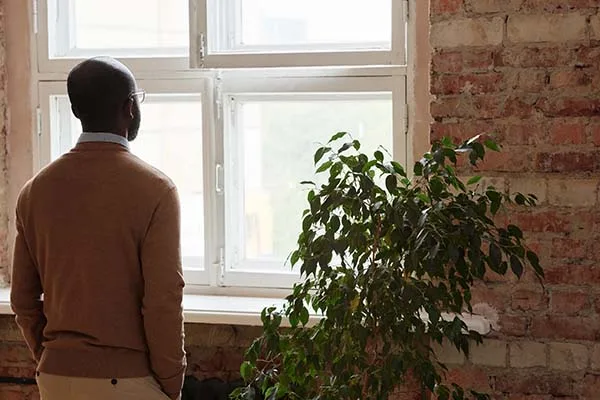
Youth Climate Lab: We look a lot at radical rest and self-care because it’s been shown that being able to put yourself first, even if you are passionate about your organization, is how you are going to help that movement.
That’s the way it has to happen if we are not going to have everyone leaving the movement every couple years or getting super excited then being like, “This isn’t working for me,” and moving on to something else and losing that momentum that’s super necessary. I don’t work past 5:00 PM. I tend to see what the boundaries are and see what I need for myself. I encourage everyone and people in programs being like, “What do you need to have success or what do you need to fill that balance?” Often, people forget and focus on what needs to get done and we are like, “What do we need to be successful in getting those things done?”
I hear a lot of leaders saying something similar and they say that for their team then they lead by exactly the opposite example. It is very good of you to be able to share that example. How do you sustain that? There is always more to do that you are never done. How did you come to the point of realizing that you needed to have that fine line or that balance for yourself?
For myself it was that I realized I couldn’t continue in climate if I didn’t have this balance and I would have to switch into a different role. I didn’t want to do that. I don’t want to be super cheesy, but my dream is super so much my dream job and you can’t lose that. You have to know what’s going to make that successful.
A part of keeping that on track as well celebrating all the wins you have, and recognizing that not everything can always be perfect. I like to say a lot, “Don’t let the good get in the way of the perfect.” Only because something doesn’t have to be exactly right. Stuff happens and it comes up. It’s still good what you’ve done at the end of the day and reaching for constant perfection. Perfection doesn’t exist if you want to get super philosophical about it.
Don't let the good get in the way of the perfect. Share on XI’m also lucky that I have people that I work with. As everyone, I’m not the perfect ideal. I try to model what I think has been but every once in a while, I will slip up and be like, “Maybe I will do this on my travel day.” I’m so thankful that there were also managers around and be like, “I don’t think you are going to do that. That’s not what you said we are going to do.”
I remember we had that time. I’m like, “You are so right.” Only because you say something you have to follow through, and having people around you that will check you on the instances where it is so easy to fall into the next thing or you always have to be doing something has helped me keep on track as well. We keep each other accountable to that, too.
You’ve mentioned the scarcity of resources in the sector broadly and in the climate space, more specifically. How do you approach raising those funds? You mentioned successfully getting to launch those two programs. What’s the strategy behind that to Youth Climate Lab?
Holistic Fundraising And Changing The Narrative For Youth Leadership
Resources are very scarce and they are probably less depending on how the political wave turns in Canada, but youth organizations especially. There was a report that came out that said something 0.6% of funds go to youth orgs globally. We are looking at such a small slice of the pie. It’s easy to be like, “That’s what you can do.” We approach our fundraising holistically.
A lot of the team is involved in a lot of the work that we do. We have done a lot of research into where similar organizations are going. We are very relationship based. We are trying to build relationships with partners and with funders who believe in us and our mission. We are mostly grants based. We are not a charity yet, but when we apply we tend to have multiple staff members lend in their area of expertise, look over things and work as a whole team so we are aware of where we are going and who we want to be working with.
We build that into our strategy and our goals. As the operations person, I make a lot of stats and graphs of research of where are other organizations looking at where we want to be, and what are they doing. Which is peeking over at someone else’s homework. It is super helpful to see what other people are doing that are bigger and or more widespread than you quite love and how can we emulate that or work towards that and build those long-lasting relationships.
We have some funders that we have had good long-term relationships with that we have chatted to and feel great about that and where we want to grow things. It is having that collective effort and seeing what we want to try out. We like to do a lot of experiments for fundraising. We have done things offering paid workshops. We are going to look at silent auctions like random little stuff continuously but the main focus is building those long-term relationships and working towards our mission in that.
All funding in the sector is 0.6% and that goes to youth led organizations. Is that frustrating? When you see that, what goes through your mind?
It can be frustrating for sure because I believe so much that youth should be leading the climate movement. We are the ones that are most invested in it and it being our futures. There’s so much amazing ideas, leadership, and information coming from youth and youth leading the charge. Even though there aren’t any resources, there isn’t as much influence or as power.
The youth should be leading the climate movement. Share on XTo me it’s a no brainer. You should get a huge chunk of the money, but then in reality, that’s not what it is. It lends into how we are looking at what we are doing in our programming. A big part of what our advocacy is to advocate for youth as being those leaders. It’s to advocate for the success stories of youth in this space. That’s a bit of how we are trying to look at that systems change too, of changing the mindset of seeing youth as legitimate leaders in Climate and maybe shifting the minds and the funding a bit toward more towards those youth organizations when they see how successful it can be.
How do you balance that messaging around or that purpose behind your organization around system change with that showing up and being taken seriously or that legitimacy to be at the table? You are saying, “We want to upset the table. We want to move and knock all the dishes off the table. Could we please have a seat at the table at the same time?” I know it doesn’t come out that way. How do you balance that tension? It says a lot about how effective and sustainable an organization can be.
It isn’t so much trying to go the route of upsetting the table, but bringing forward the ideas of, “Have you considered this? Look at all these amazing youth, these facts and figures from our programs like the success that there is. Wouldn’t this be such an exciting route to go?” How can we deepen the impact that you might be using here by bringing it over here and looking at it as more of that collaborative conversation.
I’m never going to tell anyone they are doing anything wrong because everyone’s doing the best that they can do. I’m more like, “These are ideas I have and I’d love to chat with you about it. I’d love to hear your ideas back at me, so I have a better understanding of where everyone’s coming from.” That can help shape the direction we want to go collectively.
In those conversations, I imagine you are often talking to people who probably say something like, “I had no idea or I didn’t understand or I didn’t know.” How do you know you are bringing them along? What are you listening for in a conversation with somebody who may hold a very different perspective than you and acknowledges, “I didn’t realize that?”
For some people, if it’s more like there’s curiosity there. If I see people asking questions of, “What can this look like? How would you envision this and trying to understand what the vision is or what we are seeing of it, then I know it’s leading in a good direction. If they are like, “That’s crazy,” and then they go with someone else.
I’m like, “Maybe this isn’t the person that’s as open. We can talk about other stuff.” I do think there are a lot of people that aren’t aware that there is such a funding shortage to be specific and they are open and curious to how that can change. It’s playing it by ear and having openness to what the other people are talking about and saying. You can’t get them all.
That’s the first step, is understanding you can’t get them all. You’ve got quite a few. It is remarkable to see how the organization has grown and the impact that you are having. The number of people involved is impressive. I ask all of our guests this, it’s the last question, but I have been particularly excited to ask you this question given what you do for a living. What are you looking forward to?
Looking Ahead: A New Wave Of Climate Momentum
There seems to be a lot of energy and a lot of passionate voices. There’s some good social change coming. I’m seeing so many things, like talking to you. I go to these international climate events and there does seem to be this renewed fire over the last years especially. That’s coming about of like, “We need to hold people accountable or being a bit more forthcoming or stepping up to the line and being like, ‘These are ideas and it needs to be heard.’”
I’m looking forward to seeing the more collaborative aspects coming together in Canada that I have seen over the last years. The more open access. I have seen a lot more conversations on people being like, “I’m not keeping industry secrets. I’m not keeping this to myself.” I tell people, I’m like, “You can literally pull me up and ask me anything. Let’s chat about it.” There seems to be such a big openness and this energy and desire to go forward into it. I’m super excited for some of the programs we are going to be doing and how there seems to be this additional fire that maybe I haven’t been seeing before.
The moment is coming and you and your colleagues at Youth Climate Lab are so well positioned to make the most of that. Thank you for the work that you do on a daily basis. Thank you so much for being a part of the show.
Thanks so much for having me. It’s been great to chat.

